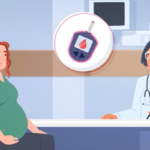April is Sexual Assault Awareness Month.
When patients go to the hospital, they expect to receive medical attention — not to be subjected to nonconsensual examinations.
In 2007, Ashley Weitz, a 37-year-old mother in Utah, went to the emergency room seeking treatment for nausea and vomiting. Weitz was sedated with promethazine to stop the vomiting. Approximately 45 minutes later, she woke up horrified to discover that her feet were in stirrups, her underwear had been removed, and the doctor was performing an invasive vaginal exam.
He claimed he was swabbing her to test for sexually transmitted infections, but Weitz didn’t consent to a pelvic exam. In fact, Weitz and the doctor had already discussed her medical history and agreed that an internal exam wasn’t necessary.
Weitz was traumatized. “In any other setting, someone putting their fingers into my vagina without my consent is assault. I did not consent to this exam — and he did it anyway.”
Nonconsensual pelvic exams are still happening
Weitz’s experience is not unique. I first spoke with her in 2019, and while there have been some legislative changes since then in some states, what happened to Weitz is still happening to other patients. Nonconsensual pelvic exams often happen in teaching hospitals where many states allow medical students to perform internal exams on unconscious patients without their consent or knowledge. This is frequently done for the purpose of teaching students how to perform this type of exam. Although more common with pelvic exams, there have also been some reports of nonconsensual prostate exams that have been done while a patient is anesthetized.
A recent survey of 101 medical students from seven American medical schools found that 92% had performed a pelvic exam on anesthetized female patients, 61% of whom reported not having explicit consent from the patients.
“This abusive practice violates a patient’s right to their own bodily autonomy, and these exams are often done for the benefit of the student, not the patient” said Weitz, who now advocates for legislation prohibiting nonconsensual exams.
Weitz’s direct testimony helped pass a law restricting nonconsensual exams in Utah in 2018. Similar laws have also recently been passed in New York, Delaware, Maine, Maryland, Washington and Florida.
California, Hawaii, Illinois, Iowa, Virginia and Oregon have also banned this practice. Legislation is pending in other states, including in Arizona and Connecticut, despite ongoing pressure from Yale Medical School, which opposes legislation restricting nonconsensual exams.
The pandemic may have hindered additional legislation after courthouses had to close in 2020. Several states, including Texas, Wisconsin, Georgia and Minnesota had bills die in the 2019-2020 legislative session. Weitz is calling for states to reintroduce these bills and for federal legislation, since many states still haven’t addressed this problem.
But Weitz cautions that even with legislative changes, nonconsensual exams can still happen. Recent laws stop the most egregious violations — such as someone coming in for shoulder surgery and a nonconsensual pelvic exam being done while they are anesthetized — but exceptions written into some of these laws related to gynecological surgeries still raise concerns.
“The exceptions made for an emergency/life-threatening situation are necessary, but exceptions surrounding gynecological surgeries are alarming. Just because a patient is having a procedure in that part of their body doesn’t mean multiple medical students should be allowed to perform pelvic exams,” Weitz says.
In recent years, some medical students have spoken out about being required to do nonconsensual exams, but fear of reprisal is common.
Dr. Heather Bartos, an OB-GYN who is the medical director of Be.Women’s Health and Wellness in Texas and a member of HealthyWomen’s Women’s Health Advisory Council, said that when she was in medical school, up to five medical students at a time performed exams on unconscious patients who didn’t know it was happening. “It made me uncomfortable. I met with patients and let them know how I was involved in their care, but divulging this information wasn’t standard practice. There were no real discussions happening around patient consent.”
Nonconsensual pelvic exams are sexual assault
Bartos adds that things still haven’t changed in many hospitals. Doctors often see themselves as helping people, and it’s difficult for some to acknowledge that a longstanding medical practice is harmful.
Medical battery — when a doctor performs a nonemergency medical procedure without getting the patient’s consent first — is just as significant as other forms of trauma and can have long-term implications on a person’s physical and mental health, Dr. Bartos explained. Unless it’s an emergency and consent can’t be obtained, these exams violate patients and students. “A nonconsensual exam is an assault on a patient and forcing students to do them is harmful, but if students speak up, they can be penalized.”
Some hospitals still defend this practice, claiming patients consenting to surgery is sufficient, and they don’t need explicit consent for students to perform internal exams. But oftentimes institutions performing nonconsensual exams also use vague consent forms that reference students being “involved” in patient care, but don’t specify they may perform vaginal exams, which raises the question: If these institutions don’t think they’re doing anything wrong, why not just get explicit consent?
Dr. Daniel Sokol, a London-based medical ethicist and lawyer, said over email that arguing that patients implicitly gave consent by signing a generic form is far-fetched. “There is a world of difference between agreeing to medical students being involved in your care and agreeing to them performing an invasive pelvic examination.”
Healthcare disparities, systemic racism and differences in how insured and uninsured patients are treated can also play a role in making vulnerable populations at higher risk of being given these types of exams. Marginalized patients often have limited choices in what hospital they go to, and teaching hospitals often provide higher rates of care in vulnerable communities.
Marline Francois-Madden, a clinical social worker in New Jersey, said this can put marginalized patients at risk. “There is often not a lot of explanation given to vulnerable patients about the forms they sign. Sometimes they are not even in the patients preferred language; patients are just expected to sign it quickly and move on.”
Not all medical schools perform nonconsensual exams. Some use paid “pelvic trainers” — people who consent to students performing exams on them and who also give feedback — and some hospitals have updated their policies on obtaining consent, leading some providers to claim that legislation isn’t necessary if they are already getting consent. But Bartos said that legislation is still necessary. “Without a legal deterrent, patients are not as protected, and laws requiring consent can protect the patient and medical provider.”
Weitz continues to fight for legislative change and works with medical students to educate them on consent and trauma-informed care. “Consent needs to be centered in patient care. The belief that providers don’t need to ask before doing an invasive exam denies patients their agency and ignores the harm nonconsensual exams cause.”
It’s important to remember that women aren’t property, and healthcare providers should not be permitted to just do what they want with them at will. Women should be the ones making the decisions about what happens to their bodies. Always.
HealthyWomen recognizes that not everyone who has a vagina and/or uterus identifies as a woman or as female.















